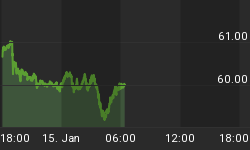Are there Mixed signals coming from the market?
Jesse Livermore stated a very simple concept back in the 1930's. He said that the market was all about money flows. If the money flowing into the market was net positive, then the market would move higher ... and, if the money flowing out of the market was net negative, then the market would move lower.
So, let's look at out Long Term Liquidity chart today. As of the close yesterday, the Inflowing Liquidity levels were in low Expansion territory and rising slowly. So, Livermore would conclude that there was a positive bias to the market ... one where the positive bias would continue as long as the Inflowing Liquidity levels continued to trend up, and remain in Expansion territory. See the next chart ...

Yesterday, the S&P 500, DJI, NASDAQ, Russell 2000, and the NYSE all closed a little higher. If all of these indexes went up, then surely the VIX should have closed a little lower, but that didn't happen ... it closed slightly higher. Since the VIX is often referred to as the fear index, it was suggesting that the market still wasn't convinced yet.
Now, imagine that the market is made up of two different stock groups. One group is the "broad market" where the trend of what the majority of stocks is doing can be measured.
The other group is something we will call the Super Leader Stock Action. This group is a representation of the changing numbers of stocks with very high strength levels. If the number of stocks with very high strength kept increasing from day to day, then they would pull the rest of the market up as time went on and as their numbers increased. Since the very strong stocks represent what investors feel are the best stocks to invest in, their conclusion must be that future profit conditions for these stocks will improve, otherwise they would not invest in them.
Likewise, the opposite should occur if the number of very strong stocks keeps decreasing day after day. The broad market would not be able to sustain an up move if the very best, strongest stocks were in a decline. The only way to offset that would be for the market to see increasing Liquidity Inflows day after day. For this to happen under these circumstances, it would suggest that some group other than those who normally buy the strongest, most profitable stocks was injecting money into the market.
So, what did the trending of the broad market stocks do compared to the trending of the Super Leader Stocks (very high strength stocks) yesterday?
The good news was that the "broad market" stocks (as measured on the S&P 500) was up, positive and above a resistance line yesterday.
The bad news was that the Super Leader Stocks were declining, in negative territory, and acting divergently with the broad market stocks.
At the same time yesterday, the S&P 500, DJI, NASDAQ, Russell 2000, and the NYSE all closed a little higher. If all of these indexes went up, then surely the VIX should have closed a little lower, but that didn't happen ... it closed slightly higher. Since the VIX is often referred to as the fear index, it was suggesting that the market still wasn't convinced yet.
So, both the trending of Leadership stocks and the VIX weren't supporting the direction of Inflowing Liquidity yesterday. That's an obvious conflict in market conditions. Livermore would say that as long as money flowing into the market was increasing, the market would be "driven" up. So, it is up to the amount and consistency of Inflowing Liquidity now.

















